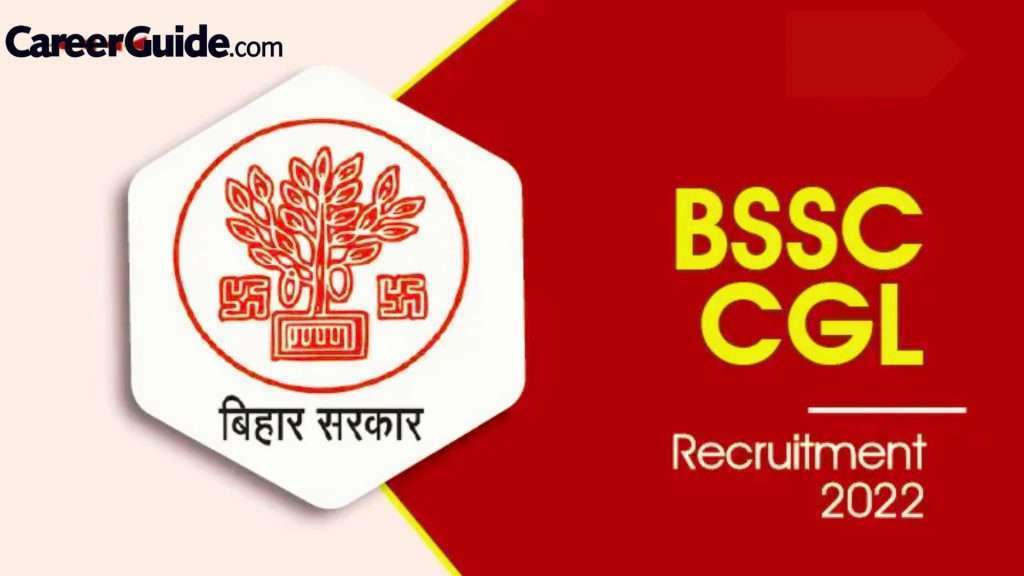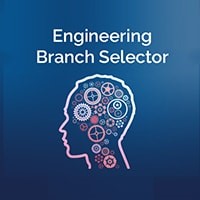BSSC CGL 2023 Syllabus

The syllabus for BSSC CGL (Bihar Staff Selection Commission Combined Graduate Level) exam includes the following subjects/topics:
- General Knowledge and Current Affairs: Indian and World Geography, Indian Polity and Governance, Indian Economy, History of India and Bihar, General Science, Current Affairs, etc.
- General Science: Physics, Chemistry, Biology, and Environmental Science.
- Elementary Mathematics: Number System, Algebra, Geometry, Trigonometry, Mensuration, Data Interpretation, etc.
- Mental Ability and Reasoning: Verbal and Non-Verbal Reasoning, Analogies, Similarities, Differences, Space Visualization, Problem Solving, Analysis, Judgment, Decision Making, Visual Memory, Discrimination, etc.
- General English: Comprehension, Fill in the blanks, Error Detection, Synonyms, Antonyms, Vocabularyhttps://www.careerguide.com/career/english/9-tips-to-improve-your-vocabulary, Grammar, etc.
The BSSC CGL exam is conducted in multiple stages, including Preliminary exam, Main exam, and Interview. The syllabus for each stage may vary, and candidates should refer to the official notification for detailed information.
It is important to note that the above-mentioned syllabus is based on the previous year’s exam pattern and is subject to change. Candidates are advised to regularly check the official website of BSSC for the latest updates on the syllabus and exam pattern.
BSSC CGL Exam Pattern 2023
bssc cgl exam pattern. bssc cgl exam pattern.
| Stage | Exam Type | Number of Questions | Duration | Marking Scheme | Negative Marking |
|---|---|---|---|---|---|
| Preliminary Exam | Objective | 150 | 2 hours | +1 for correct answer<br>-0.2 for incorrect answer | 0.2 for each incorrect answer |
| General Studies | 50 | ||||
| General Science & Mathematics | 50 | ||||
| Mental Ability Test | 50 | ||||
| Main Exam | Paper 1 (Objective) | 100 | 2 hours | +1 for correct answer<br>-0.2 for incorrect answer | 0.2 for each incorrect answer |
| General Hindi | 25 | ||||
| General Studies | 25 | ||||
| General Science & Mathematics | 25 | ||||
| Mental Ability Test | 25 | ||||
| Paper 2 (Descriptive) | 5 | 2 hours | Maximum 50 | N/A | |
| Interview | Maximum 100 | N/A |
Important Topics & Weightage – General Knowledge.
| S.No. | Topics |
|---|---|
| 1 | Indian history and culture |
| 2 | Indian geography and world geography |
| 3 | Indian polity and governance |
| 4 | Economics and finance |
| 5 | Current affairs and events |
| 6 | Science and technology |
| 7 | Environment and ecology |
Important Topics & Weightage – General Science
| S.No. | Topics |
|---|---|
| 1 | Physics – Mechanics: Laws of motion, Work, energy and power, Motion of system of particles and rigid body |
| Heat and Thermodynamics: Heat transfer, Thermodynamics laws and processes, Kinetic theory of gases | |
| Optics: Reflection and refraction, Interference and diffraction, Polarization | |
| Electricity and Magnetism: Electric charges, fields and potential, Current electricity, Magnetic effects | |
| Modern Physics: Relativity, Atomic and nuclear physics, Quantum mechanics | |
| 2 | Chemistry – Atomic Structure: Bohr’s model, Quantum numbers, Electronic configuration, Periodic table |
| Chemical Bonding: Ionic and covalent bonding, Hybridization, Molecular orbital theory | |
| Chemical Equilibrium: Law of chemical equilibrium, Le Chatelier’s principle, Equilibrium constants | |
| Acids, Bases and Salts: Concept of pH, Strength of acids and bases, Hydrolysis | |
| Redox Reactions: Oxidation and reduction, Balancing redox reactions, Electrochemical series | |
| Metals and Non-Metals: Properties, Extraction and applications of metals and non-metals | |
| Organic Chemistry: Nomenclature, Isomerism, Alkanes, Alkenes and Alkynes, Alcohols and Phenols | |
| Environmental Chemistry: Environmental pollution, Water and air pollution, Green chemistry | |
| 3 | Biology – Cell Structure and Function: Cell theory, Cell organelles, Mitosis and Meiosis |
| Diversity in Living World: Five kingdom classification, Binomial nomenclature, Biodiversity | |
| Human Physiology: Digestive system, Respiratory system, Circulatory system, Nervous system, Endocrine system | |
| Plant Physiology: Photosynthesis, Respiration, Transpiration, Growth and Development | |
| Genetics and Evolution: Mendel’s laws, DNA structure and replication, Human genetics, Darwin’s theory | |
| Ecology and Environment: Ecosystem, Food chain and food web, Biodiversity, Pollution and conservation |
Important Topics & Weightage– Elementary Mathematics
| Topic | Sub-Topics Covered |
|---|---|
| Number Systems | Divisibility Rules, HCF and LCM, Fractions and Decimals, Square Roots and Cube Roots |
| Algebra | Linear Equations, Quadratic Equations, Polynomials, Factors and Multiples, Inequalities |
| Geometry | Lines and Angles, Triangles, Quadrilaterals, Circles, Constructions, Surface Area and Volume |
| Mensuration | Areas, Perimeter and Circumference, Surface Area and Volume of 2D and 3D figures |
| Trigonometry | Trigonometric Ratios, Trigonometric Identities, Heights and Distances |
| Statistics | Mean, Median, Mode, Range, Standard Deviation, Probability |
| Arithmetic Operations | Addition, Subtraction, Multiplication, Division, Percentages |
| Simplification | BODMAS Rule, Fraction Simplification, Decimal Simplification |
| Time and Work | Work Efficiency, Wages and Salaries, Pipes and Cisterns |
| Time and Distance | Speed, Time, and Distance, Relative Speed |
| Profit and Loss | Profit, Loss, Discount, Partnership |
| Percentages | Calculation of Percentages, Percentage Change |
| Ratio and Proportion | Ratio, Proportion, Variation |
| Simple and Compound Interest | Simple Interest, Compound Interest, Installments |
| Average | Arithmetic Mean, Weighted Average |
| Permutation and Combination | Permutation, Combination |
| Probability | Theoretical Probability, Empirical Probability |
| LCM and HCF | LCM and HCF of Numbers, LCM and HCF of Algebraic Expressions |
| Partnership | Sharing of Profit, Loss in Partnership |
| Geometry of Conics | Parabola, Hyperbola, Ellipse |
| Trigonometric Identities and Equations | Trigonometric Equations, Inverse Trigonometric Functions |
| Properties of Triangles | Congruence, Similarity, Pythagoras Theorem |
| Properties of Circles | Tangents and Secants, Chords and Arcs |
| Coordinate Geometry | Distance Formula, Mid-Point Formula, Equation of a Line, Slope-Intercept Form |
Important Topics & Weightage – Mental Ability and Reasoning
| Verbal Reasoning | Involves using words and language to solve problems, such as analogies, classification, series completion, etc. |
| Non-Verbal Reasoning | Involves using pictures and diagrams to solve problems, such as figure matrix, paper folding, mirror image, etc. |
| Analytical Reasoning | Involves using logical reasoning to solve problems, such as syllogisms, blood relations, seating arrangements, etc. |
| Number Series | Involves finding the missing number in a given sequence of numbers based on a pattern or rule. |
| Letter Series | Involves finding the missing letter in a given sequence of letters based on a pattern or rule. |
| Coding-Decoding | Involves coding and decoding messages based on certain rules or patterns. |
| Syllogism | Involves deductive reasoning to draw conclusions based on given premises. |
It’s important to note that the above list is not exhaustive, and there may be additional topics included in the BSSC CGL exam. It’s always a good idea to check the official syllabus provided by BSSC and previous year’s question papers to get a better idea of what to expect in the exam.
Important Topics & Weightage – General English
| Topic | Description |
|---|---|
| Sentence Completion | Involves completing a sentence with a correct word or phrase, testing candidates’ understanding of grammar and vocabulary. |
| Error Spotting | Involves identifying errors in a sentence, such as grammatical errors, spelling errors, and punctuation errors. |
| Fill in the Blanks | Involves filling in the missing word or phrase in a sentence, testing candidates’ understanding of grammar and vocabulary. |
| Cloze Test | Involves filling in the missing words in a passage, testing candidates’ understanding of context and vocabulary. |
| Word Usage | Involves choosing the correct word or phrase that fits in the given context. |
| Idioms and Phrases | Involves understanding the meaning of common idioms and phrases used in English language. |
| One-word Substitution | Involves replacing a group of words with a single word that conveys the same meaning. |
| Precis Writing | Involves summarizing a given passage in a concise and coherent manner. |
| Letter Writing | Involves writing formal or informal letters on a given topic, testing candidates’ writing skills and ability to communicate effectively. |
It’s important to note that the above list is not exhaustive, and there may be additional topics included in the BSSC CGL exam. It’s always a good idea to check the official syllabus provided by BSSC and previous year’s question papers to get a better idea of what to expect in the exam.
Most Popular Links:
Career Tests

Graduates & Post Graduates

21st Century Skills & Learning Test Grade 12

21st Century Skills & Learning Test Grade 11

21st Century Skills & Learning Test Grade 10

PSYCHOMETRIC IDEAL CAREER TEST™

PSYCHOMETRIC SKILL BASED TEST FOR 9TH

PSYCHOMETRIC ENGINEERING SELECTOR

PSYCHOMETRIC EDUCATOR PROFESSIONAL SKILLS

PSYCHOMETRIC STREAM SELECTOR™

PSYCHOMETRIC COMMERCE CAREER SELECTOR

PSYCHOMETRIC HUMANITIES CAREER SELECTOR








